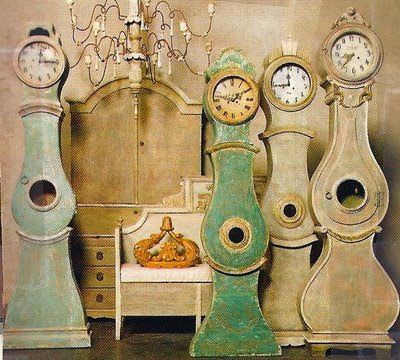In the winter of 1750 the town of Mora, Sweden was bitterly starving. A blight had ruined the crops and this small town in central Sweden was impoverished. What’s a mother to do? (Mora comes from “mor, the Swdish word for mother.)
The town had fallen on hard times since driving the Danish out of the country in the 15th century. They had to do something soon, or they feared all would be for naught.

Suddenly inspiration struck! It would take the skills and organization of the entire town to pull off this hair-brained idea, but it was all they had.
Almost overnight the entire town became a beehive of activity. Some people carved cases, others built clockworks, and a few hand-painted by candlelight during the long winter nights.

Their product was a beautiful, uniquely shaped, tall clock. Resembling the female form, a curvaceous Swedish lady, and over the next 80 years the clock industry flourished in Mora. This simple, yet beautiful, clock saved a crumbling town.
Imagine 90 people coming together to form an industry. They became renown for the style and sophistication of the clockworks and colors. Catching the attention of the kings and queens the popularity of the clock soared. It’s a style that is still appreciated and reproduced today, and can be found in many a living room or sitting room of any style.
Tomorrow we will show you how we took our Mora and made her a lovely Gustavian beauty with a little bit of bling and some Efex.

